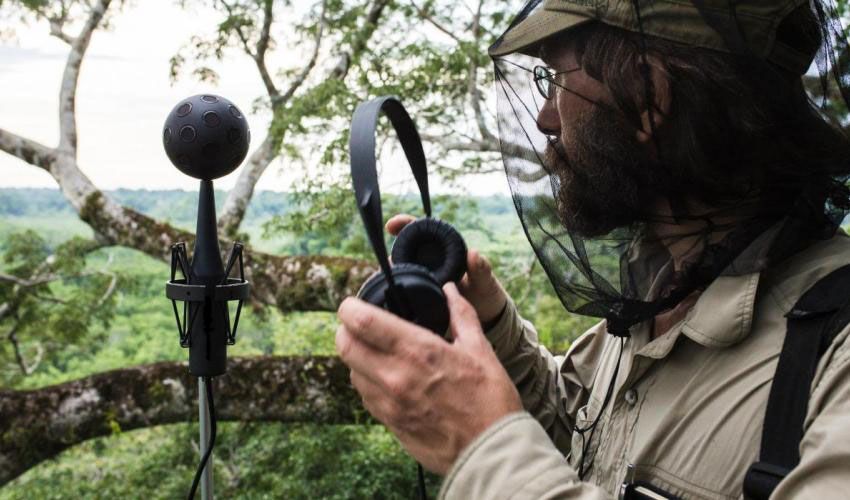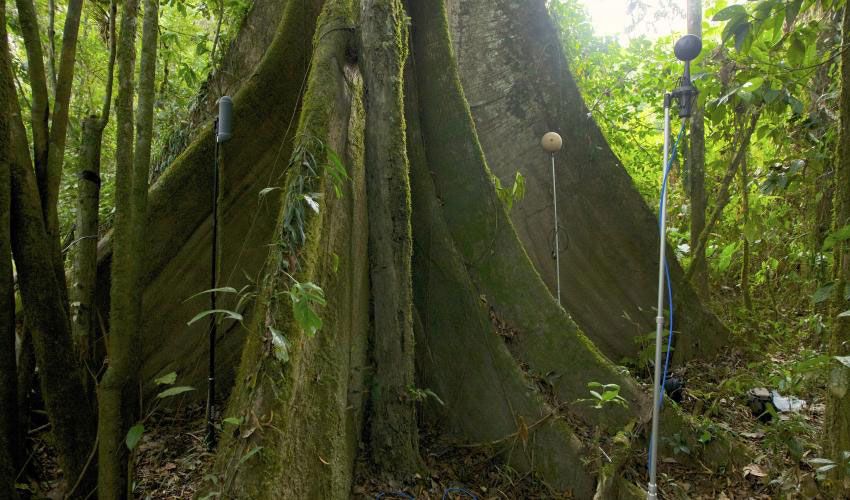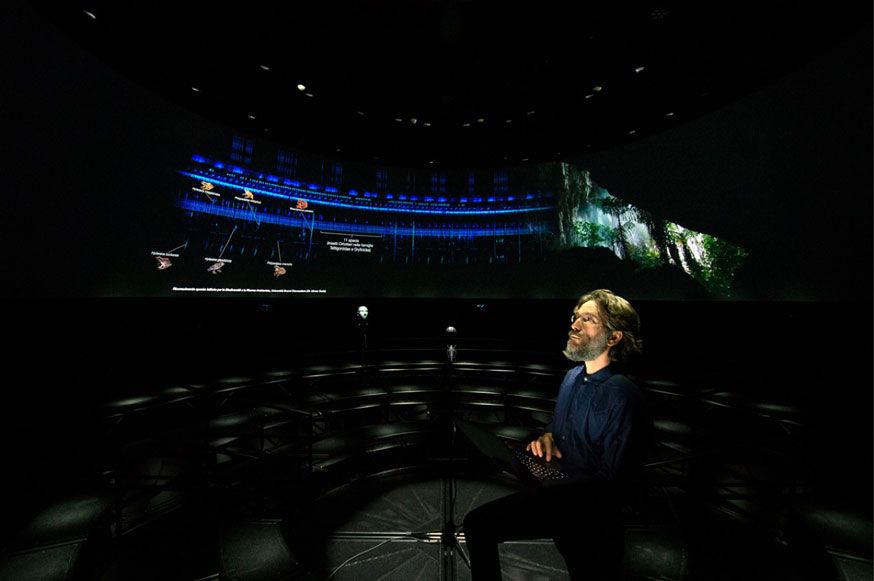Currently, the rate of extinction is about 100 to 1000 times higher than it naturally should be according to the Millennium Ecosystem Assessment released by the United Nations. Pollution, deforestation and overexploitation of natural resources are among the triggers for this overwhelming loss of biodiversity, with 8.7 million species going extinct.
“This kind of information moved me, about 15 years ago, to dedicate my life to an interdisciplinary project that joins science, technology, and art to foster public awareness of ‘the most silent catastrophe of our times, what has been defined as the Sixth Mass Extinction,” David Monacchi said.
“The ongoing ecocide is silencing forever the marvellous choirs of natural sound, the ‘eco-symphonies’ we have not even heard or recorded.”

David Monacchi has been described as an electro-acoustic researcher, an unusual title for an important and unprecedented mission: a race against the clock to capture the last song of dying habitats. As the founder and director of the Fragments of Extinction project, Monacchi has a background as a sound engineer and in music. “I have always tried to strike a balance between art and science in my work,” he said. “My vision was to build a collection of 24-hour-long ‘acoustic fragments’, recorded at the highest definition possible, capturing the sonic heritage of ancient, biodiverse, untouched tropical rainforests—before climate change damages them irreversibly.”
Monacchi is a sound designer who has been studying natural sounds for 15 years and began this project in 1998.

The recordings span the rainforests’ whole circadian cycle. Through sound recording technology, they were able to create “three-dimensional sound portraits”. These recordings are not just heart-breaking symphonies of a dying orchestra; preserving the sounds of the habitats will allow for ground-breaking research and discoveries. These recordings can tell us about the habits of its inhabitants and the overall health of the ecosystem. For example, these recordings were used after the 2011 wildfires in Arizona to measure the damage and recovery of insect populations. These opportunities make this project the perfect melting pot of art, technology and science.
The United Nations is very concerned about the rapid loss of biodiversity, in what is currently referred to as the 6th mass extinction. Therefore, projects like Fragments of Extinction are vital to the United Nations Sustainable Development Goal of Life on Land, which seeks to combat desertification, biodiversity loss and land degradation.
In order to capture the full resonance of the diversity of species and movement of water and plants, they had to use 38 audio channels and microphones synchronously. Each habitat—from Southern Africa to Asia—and its diverse animals and insect inhabitants have represented challenges for Monacchi as a sound engineer over the last 20 years. The film Dusk Chorus (2016), showcases this painstaking and electrifying process in a stunning documentary overlaid with the hauntingly beautiful audio footprint of the landscapes being shown.

The recordings have been shared in Italy and Denmark in custom-outfitted theatres to create a "sphere of sound". “We are bringing them back to the people of museums, in order to reflect on the beauty, the fragility, the complexity, the balance of these habitats,” he said of the exhibitions.
You can listen to the sound portraits here. Headphones and quiet reflection are recommended. You can also see Monacchi’s TedTalk here or the film here.
